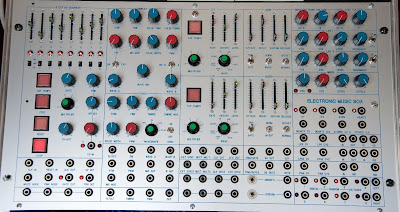Godfried T. Toussaint has written a book "The Geometry of Musical
Rhythm" where he uses an interesting geometrical representation of
rhythms. There are many interesting topics in this book like Euclidean
rhythms, Crystallography and rhythms, Radio Astronomy and Flat Rhythms,
Deep rhythms and Symmetric rhythms.

The Elements (Stoicheia) is a collection of 13 books written by Greek mathematician Euclid 300BC.These books contain a compilation of algorithms to solve a variety of geometric and number theory problems. One algorithm called the Euclidean algorithm solves the problem of finding the greatest common divisor of two given natural numbers. Whith musical rhythms this means that Euclidean algorithm can be used to find how the beats (number of beats is k) in a sequence (of length n) can be distributed as evenly as possible. The rhythms generated in this way are called Euclidean rhythms and will be denoted by E(k,n). It's interesting how this simple algorithm generates rhythms that are used throughout the world. You can read more about Euclidean rhythms as described by Toussaint in this free paper (
http://cgm.cs.mcgill.ca/~godfried/publications/banff.pdf).
What has this all to do with modular synthesisers ? I bought a Stoicheia DIY-module by Rebel Technology (
http://www.rebeltech.org/products/stoicheia/) from Thonk (
https://www.thonk.co.uk/shop/rebel-technology-full-diy-kits/). Stoicheia is a dual Euclidean Sequencer that has the Euclidean algorithm programmed in it's Arduino ATMega168 CPU.
You can generate all the max. 16 step length Euclidean sequences with just three control knobs:
1. Starting beat of the sequence that can be rotated left or right
2. The length of the sequence 1-16
3. The number of on-beats from 1 to length of the sequence
These two sequencers can be chained to create sequences longer than 16 steps. You can easily generate as complex as you want rhythms with this simple module.



























